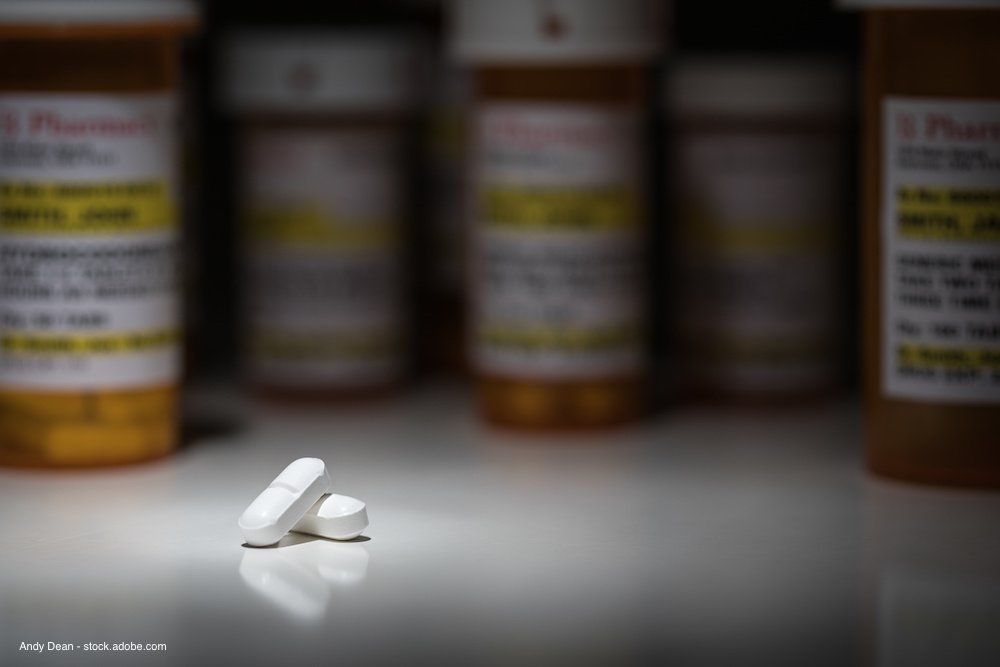Article
Intervention reduces post-RP opioid prescriptions
Author(s):
A simple intervention aiming to curb the contribution of postoperative pain medication prescribing to the opioid crisis was shown to reduce post-discharge opioid prescribing and use and increase opioid disposal without seeming to jeopardize pain control for patients who had undergone radical prostatectomy.

A simple intervention aiming to curb the contribution of postoperative pain medication prescribing to the opioid crisis was shown to reduce post-discharge opioid prescribing and use and increase opioid disposal without seeming to jeopardize pain control for patients who had undergone radical prostatectomy.
Known as the ORIOLES (Opioid Reduction Intervention for Open, Laparoscopic, and Endoscopic Surgery) Initiative, the three-pronged intervention coupled evidence-based standardized opioid prescribing with two types of patient education.
“Overprescribing of opioid pain medications for surgical patients that can lead to long-term dependence is a well-recognized problem. The threshold we set for prescribing seems to have worked well for patients undergoing radical prostatectomy, and our low-burden approaches to post-discharge opioid education had a positive impact as well,” said Hiten D. Patel, MD, MPH, urological surgery resident at The Johns Hopkins Medical Institutions, Baltimore.
Also see: Increased vegetable intake not linked with reduced PCa progression
“Going forward, we will see what additional avenues can be implemented for further reducing opioid use and improving disposal and what additional resources are needed to accomplish those goals,” added Dr. Patel, who worked on the study with Amin Herati, MD, and colleagues. The findings were presented at the 2019 AUA annual meeting in Chicago; data from ORIOLES were also published in BJU International (2020; 125:426-32).
The standardized prescribing amount used in the intervention was developed based on the findings of a previous study (“pre-intervention study”) that documented a large discrepancy between the amount of opioid medication that was being prescribed post-discharge to radical prostatectomy patients and the amount patients were using.
“There has been little data to guide appropriate tailoring of opioid prescribing after urologic surgery, and so creating a system for quantifying patient requirements for pain control is the first step,” said Dr. Patel.
In the pre-intervention arm, which included 214 patients, the median prescribed oral morphine equivalent (OMEQ) dose was 224 mg, but the median OMEQ dose used was only 52.1 mg. Patients disposed only 13.8% of their leftover medication in the pre-intervention arm.
With the intent of meeting the pain medication needs of >80% of patients, the standardized OMEQ dose used in the prospective intervention study was set at 112.5 mg (equivalent to 15 tablets of oxycodone, 5 mg). However, the protocol allowed urologists to use their judgment and prescribe a higher number of pills based on each patient’s history. Information to discourage unnecessary opioid use and encourage appropriate disposal was provided by nursing education while the patient was in the hospital and reinforced with a printed sheet provided at discharge.
A total of 229 patients participated in the prospective intervention study, and they were similar to the pre-intervention cohort with respect to demographic characteristics, perioperative outcomes, comorbidities, and the proportions of patients with a pain diagnosis or opioid use prior to surgery. A significantly higher percentage of patients in the prospective intervention cohort underwent a robotic prostatectomy (81.2% vs. 72.4%).
Next: Disposal rate doubledDisposal rate doubled
In the intervention study, the median OMEQ prescribed was 120 mg (–46.4% vs. the pre-intervention cohort) and the median OMEQ used was 38.3 mg (–26.5% vs. the pre-intervention cohort). The rate of opioid disposal increased to 27.3%, although the change compared to the pre-intervention cohort reflected an increase in pills that were flushed or thrown out rather than an increase in the percentage returned to take-back programs.
“The utilization of take-back programs for unused opioid medication was still low, but we were encouraged that the overall disposal rate was doubled when patients were exposed to our simple intervention,” said Dr. Patel.
Dr. Patel reported that five patients (2.2%) in the prospective intervention study required additional opioid medication.
Read: ASCO publishes prostate cancer biomarker guideline
“One of the limitations of our study is that we did not track pain scores. The data on opioid refills, however, suggests that our standardized prescribing approach met patients’ needs for pain medications, especially considering that it was based on meeting the needs of 84% of patients implying up to 16% might have requested additional medication,” he said.
“Findings of a multivariable analysis to identify characteristics associated with greater opioid use suggested that obese patients and patients using opioids prior to surgery may require additional counseling and/or a greater quantity of medication.”
Three patients (1%) who were not on an opioid before surgery continued using the pain medication for longer than would be expected to control surgery-related pain, which compares favorably with published data that approximately 6% to 7% of patients have new persistent opioid use after surgery. All three patients had pre-existing or newly developed (eg, herniated disc) chronic pain conditions.
Newsletter
Stay current with the latest urology news and practice-changing insights — sign up now for the essential updates every urologist needs.

















